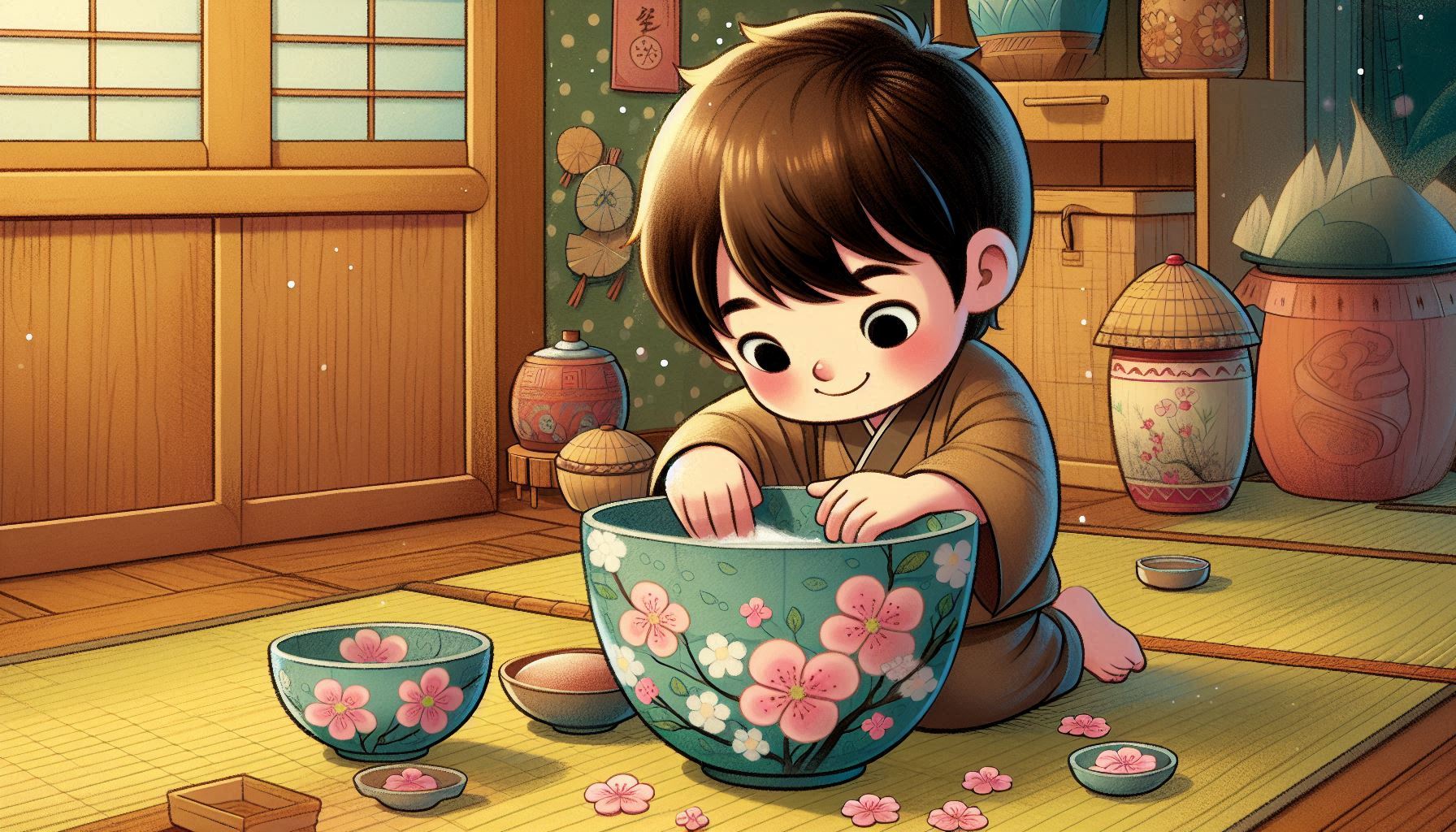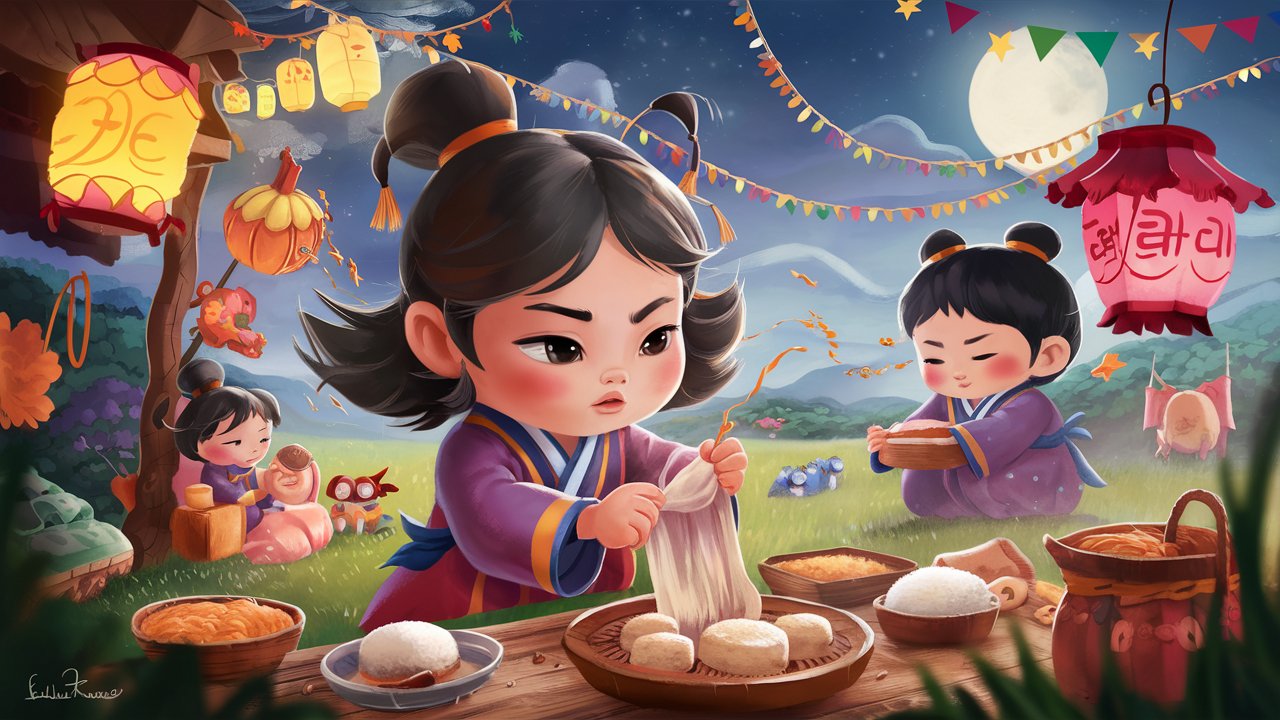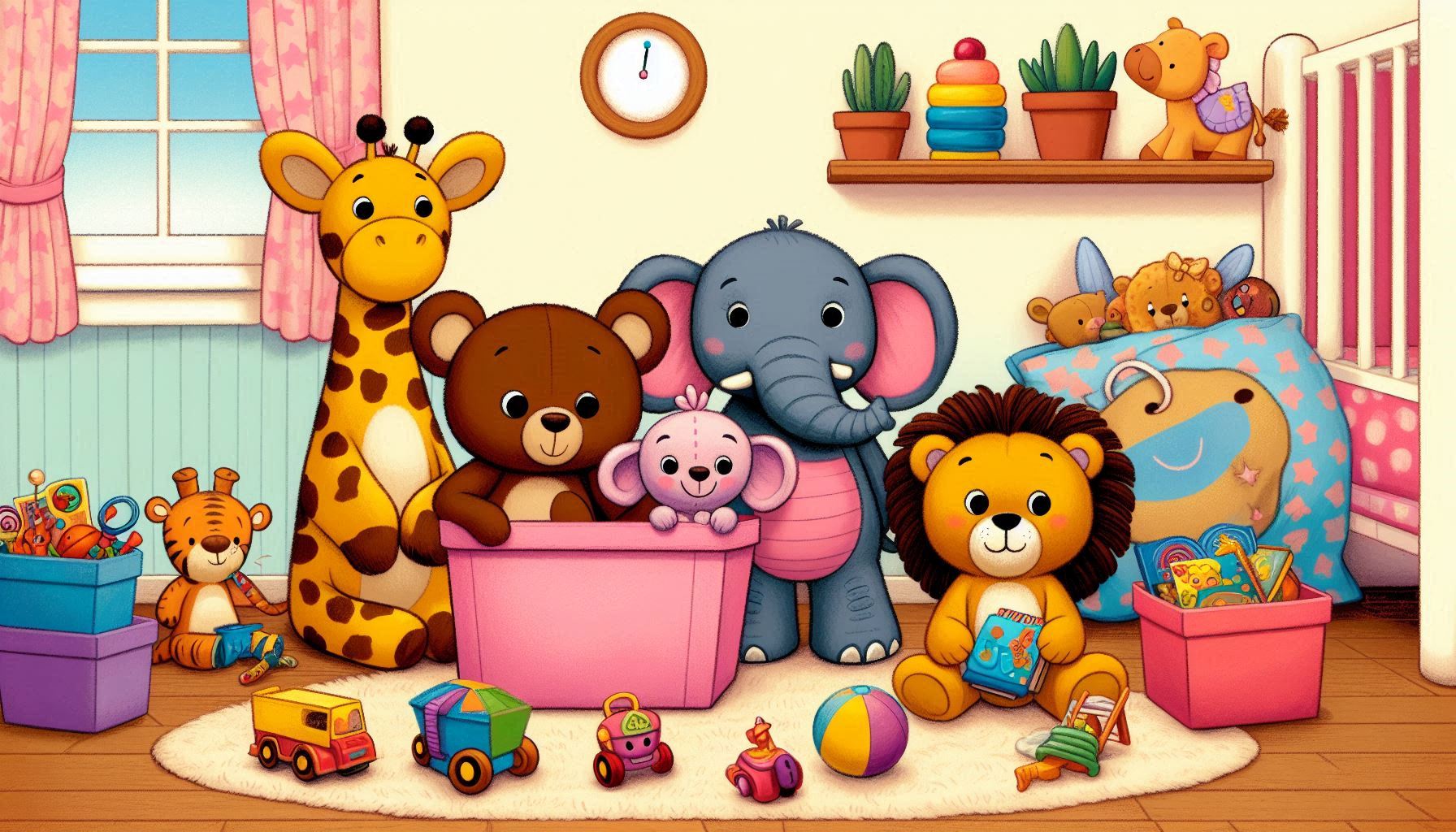
The Golden Seams of Akira's Heart
A poignant story from Japan about a young boy's journey to heal his broken heart, teaching the art of kintsugi and the beauty of resilience.
Start Listening:
In a quiet town in Japan, there lived a boy named Akira. He was known for his beautiful smile and kind heart. Akira's most prized possession was a delicate ceramic bowl that his grandmother had given him before she passed away. It was decorated with intricate cherry blossom patterns, and Akira treasured it above all else.
One day, while carefully dusting his room, Akira accidentally knocked the bowl off its shelf. It fell to the floor, shattering into dozens of pieces. Akira's heart felt as broken as the bowl. He gathered the shards, tears streaming down his face, unsure of what to do.
Akira's father found him sitting amidst the broken pieces. Seeing his son's distress, he sat down beside him and gently said, "Akira, do you know about the art of kintsugi?"
Akira shook his head, wiping away his tears.
His father explained, "Kintsugi is the art of repairing broken pottery with gold. It teaches us that broken things are not to be hidden or thrown away, but can be made even more beautiful and valuable through their healing."
Intrigued, Akira asked to learn this art. His father smiled and took him to visit Master Takeshi, a renowned kintsugi artist in their town.
Master Takeshi's workshop was filled with beautiful pottery, each piece telling a story through its golden seams. The old master greeted them warmly and listened as Akira's father explained the situation.
"Young Akira," Master Takeshi said, his eyes twinkling, "would you like to learn how to heal your bowl?"
Akira nodded eagerly, and so began his apprenticeship with Master Takeshi. Over the next few weeks, Akira visited the workshop every day after school. He learned how to carefully clean each broken piece, how to mix the special lacquer, and how to apply the gold powder.
As Akira worked, Master Takeshi shared stories and wisdom. "Kintsugi," he said, "is not just about repairing pottery. It's a philosophy about life. When we fall and break, we have a choice. We can hide our scars and pretend we were never hurt, or we can heal proudly, allowing our experiences to make us stronger and more beautiful."
Akira thought about this as he carefully joined the pieces of his bowl. He remembered the happy times with his grandmother, the sadness of losing her, and the accident that broke the bowl. As he worked, he realized that all these experiences were part of his story, just like the golden seams were now part of the bowl's story.
Weeks passed, and finally, the bowl was complete. Akira gazed in wonder at the result. The golden seams traced a beautiful pattern across the ceramic, making the bowl even more stunning than before. The cherry blossoms seemed to dance along the golden rivers, creating a breathtaking landscape.
"It's more beautiful than ever," Akira whispered, his eyes shining.
Master Takeshi nodded. "Just like you, Akira. Your heart, like this bowl, has been broken and healed. And now, it shines even brighter."
Akira carefully took the bowl home and placed it in a place of honor. From that day on, whenever Akira faced difficulties or sadness, he looked at the bowl and remembered the lesson of kintsugi. He learned to embrace his challenges and sorrows, allowing them to make him stronger and more compassionate.
As Akira grew older, he became known in his community for his resilience and kindness. People often came to him for comfort and advice, drawn by the warmth of his smile and the wisdom in his eyes. And always, in a place of honor in his home, sat the beautiful bowl with its golden seams, a reminder that our broken places can become our greatest strengths.
Moral: Our experiences, both joyful and painful, shape who we are. By embracing our challenges and healing with grace, we can become even more beautiful and resilient.


